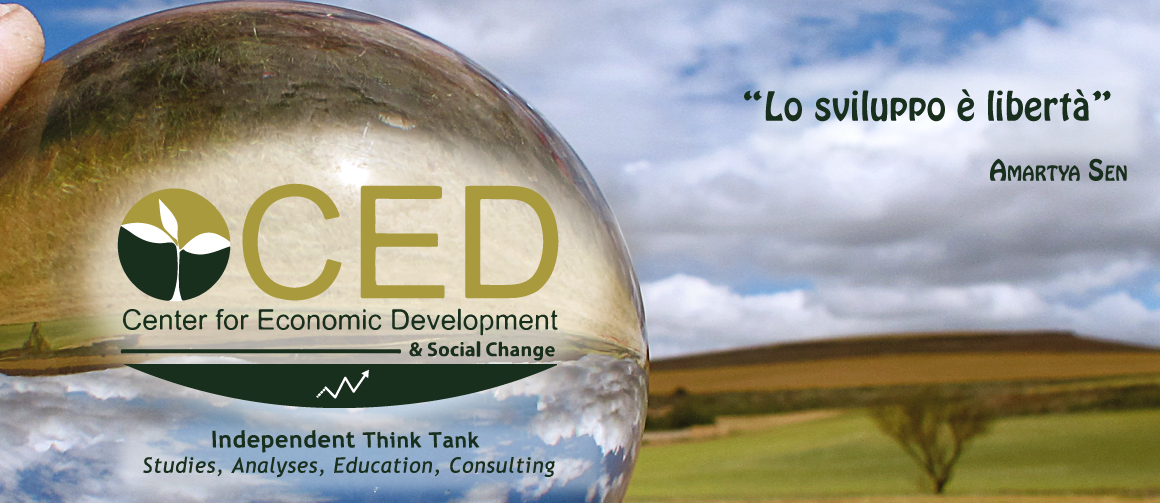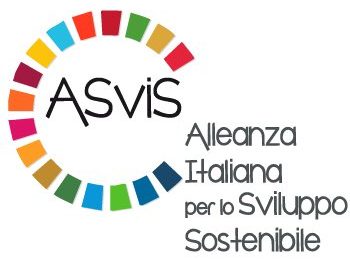
Fonte: Adam Cohn
Introduction: the Environmental Kuznets Curve (EKC)
The relationship between economic development and environmental sustainability is represented at best by the so-called Environmental Kuznets Curve (EKC). The reasoning behind the curve grounds on the idea that countries in the early stage of economic development are likely to pollute more, suggesting further economic development as an essential tool to tackle environmental degradation, in contrast to the theory of economic de-growth.
According to the production scale effect, we expect environmental pollution to increase with the level of aggregate output. However, as income rises, the production scale effect is mitigated by the shift towards economic sectors with lower marginal pollution intensity, such as tertiary sectors. Still, the full offset of the negative production scale effect would require production of inferior goods (implausible) or increasing import (which would simply imply pollution leakage). As income keeps rising, together with its decreasing marginal utility, the social marginal costs of environmental damage increase. Hence, in order to further alleviate the production scale effect and to address market failures, society is becoming more willing to pay abatement costs by strengthening the effectiveness of environmental regulation by the adoption of cleaner technologies and energy sources, which respectively increase the productivity of each unit of input and decrease its emission intensity. Addressing market failures is driven by policy responses induced by increased public concerns, by increased information about the negative health impact of pollution and by the interactions among all parties involved, from governments to regulators and policymakers, from firms to NGOs (Torras et al. 1998).
Figure 1: The Conventional Environmental Kuznets Curve

Source: wikipedia.org
Assumptions and critiques
Theoretical studies have demonstrated the necessary conditions in order to observe the EKC (see Dasgupta et al 2002). These are constant or decreasing marginal utility of income; rising disutility and marginal damage of pollution, and increasing pollution abatement costs. The critics to the curve are multiples (see Stern 2004). First, there is the risk of a “race to the bottom” in environmental standards across competing countries. High environmental standards are perceived to be not sustainable since they cause capital outflows and relocation of firms in lower income countries with lower environmental standards. Eventually, in order to avoid larger capital outflows, developed economies would relax their regulatory standards. Second, the presence of new unregulated toxic polluters might underestimate the actual level of pollution. Third and most severe critique, there has been an overall lack of sound econometric foundations in the literature. When proper econometric models have been adopted, the conventional EKC does not exist. Robust empirical evidences (see Stern 2004 for a detailed literature review) show how at each level of per capita income pollution rises, while it decreases through time fixed effects, with the latter referring to both improvement in environmental regulation and technological advances. The conventional inverted U shape of the EKC is then explained by the high rates of economic growth of developing countries, which overwhelm the pollution abatement efforts.
The scenario for developing countries
In developing countries, the conventional EKC might seem to suggest a policy “growth first, then clean up”, which is no more environmentally sustainable in the current global context. Improving the relationship between early economic development and environmental costs faces challenges. For example, poor households are more interested in income given its higher marginal utility; consumption preferences are homothetic, meaning perfect correlation between income consumption and pollution; and optimal pollution abatement is zero until a certain capital stock is reached (Dasgupta et al. 2002). In addition, the establishment of quality and effective regulation is challenging since environmental degradation gets its priority in government agenda only after the achievement of sufficient level of basic services, such as access to electricity and/or clean water. However, few environmental regulation principles can be adopted as starting point (Dasgupta et al. 2002). First, since relatively few sources are responsible for pollution, their targeting and monitoring by advanced environmental standards becomes essential. Second, as soon as the sufficient regulatory prerequisites are present, it is necessary to shift from command-and-control policy to market-based instruments.
Empirical evidences from developing countries do show how environmental degradation is being tackled at earlier stages of economic development, meaning lower environmental costs of growth.
Costs-benefits analyses for China, India, Indonesia, Brazil and Sub-Saharan Africa (see Dasgupta et al. 1997; Calkins 1994; Von Amsberg 1997), countries still far from the conventional EKC income threshold, shows a tightening in the environmental regulation because of the already high environmental costs and because of its economic returns.
The past trends and the future scenario
In the previous decades, there has been a tendency in improving the ratio between economic growth and environmental quality through the economic liberalization and privatization of major economic sectors. The elimination of government subsidies has promoted economic activities that reflect actual comparative advantages in the production, changing the sectoral composition of the whole economy. Consequently, the previously subsidized heavy-polluting production has been shifted to countries and energy plants with relatively efficient economy of scale in the production. As the percentage of urban population will steadily increase in the next decades, the role of cities becomes of primary importance in improving the relationship between economic development and environmental quality. In this regard the current major of London Sadiq Khan stated for the Economist (The Economist 2017) how:
“If the 19th century was defined by empires, and the 20th by nation-states, the 21st century will be remember for the rise of cities and the social, economic and environmental progress they help to unlock”.
Cities and municipalities are indeed more effective in investing and implementing suitable, adaptable and innovative policies in public infrastructure sectors such as power, housing and transport, which are responsible for a large part of pollution emissions and economic development of a country. Centralized provision and consumption would decrease the marginal pollution abatement costs in the face of steadily increasing marginal costs of environmental damages.
Figure 2: First 20 countries by emissions of CO2 in 2010 and percentage increase of emissions between 1995 – 2010

Source: economia finita.com; based on CDIAC’s data
The role of energy sectors in shaping the EKC
Energy sector is at the core of the widespread environmental degradation across the globe through the production and consumption of fossil fuels and electricity. The performance of relatively recent unconventional fossil fuels, such as the extremely pollutant oil extraction from tar sands, are in contradiction with the inverted U shape of the EKC (Busato et al. 2016). They are being increasingly exploited also by developed economies because of their tempting economic returns, hence creating a monotonic relationship between economic development and environmental degradation.
Creating economic returns in the adoption of renewables energy sources by energy subsidization reform might align the energy sectors to the concept of EKC.
In 2011 the international subsidies for fossil fuels amounted to 523 billion US$, exceeding subsidies for renewables sixfold (Ben Jebli et al. 2016). In this regard, the objective of the EU energy policy is to achieve low-carbon zero-subsidy electricity supply by 2020. The goal is to make renewable energy production competing with fossil fuels exclusively through the level of the carbon price, without the need of any form of subsidization, through the reform of the EU emission trade system (ETS) (EC, 2015). Empirical evidences from 27 European countries in the period 1996 – 2010 reported significant impact of renewable energy production in shaping the EKC, with low renewable-intensity countries reporting a N shape of the curve (Lopez-Menedez et al. 2014).
To conclude, despite the critical issues discussed above, the EKC represents an instrument to highlight the relationship between economic development and environmental damage. To define such relationship, economic policy, environmental legislation and technological advances play a key role, particularly in emerging economies and in the energy sectors.
Bibliography
Ben Jebli, Youssef and Ozturk (2016). Testing environmental Kuznets curve hypothesis: The role of renewable and non-renewable energy consumption and trade in OECD countries. Ecological Indicators 60, 824–831.
Busato and Maccari (2016). Canadian oil sand extraction: the nexus between economic development and environmental sustainability. The Extractive Industries and Society Volume 3, Issue 1, Pages 141-148.
Calkins (1994). Indonesia: Environment and Development. World Bank.
Dasgupta, Wang and Wheeler (1997). Surviving Success: Policy Reform and the Future
of Industrial Pollution in China. World Bank Policy Research Department Working Paper No. 1856.
Dasgupta, Laplante, Wang and Wheeler (2002). Confronting the Environmental Kuznets Curve. Journal of Economic Perspectives—Volume 16, Number 1, 147–168.
EC, 2015. Energy Union Package “A Framework Strategy for a Resilient Energy Union with a Forward-Looking Climate Change Policy”.
Lopez-Menedez, Perez and Moreno (2014). Environmental costs and renewable energy: Re-visiting the Environmental Kuznets Curve. Journal of Environmental Management 145, 368 – 373.
Luzzati & Orsini (2009). “Investigating the energy-environmental Kuznets curve”, in Energy, 34, 291-300.
Stern (2004). The Rise and Fall of the Environmental Kuznets Curve. World Development Vol. 32, No. 8, 1419–1439.
The Economist (2017). The World in 2017.
Torras and Boyce (1998). Income, inequality, and pollution: a reassessment of the environmental Kuznets Curve. Ecological Economics 25, 147–160.
Von Amsberg (1997). Brazil: Managing Pollution Problems, The Brown Environmental Agenda. World Bank Report.








